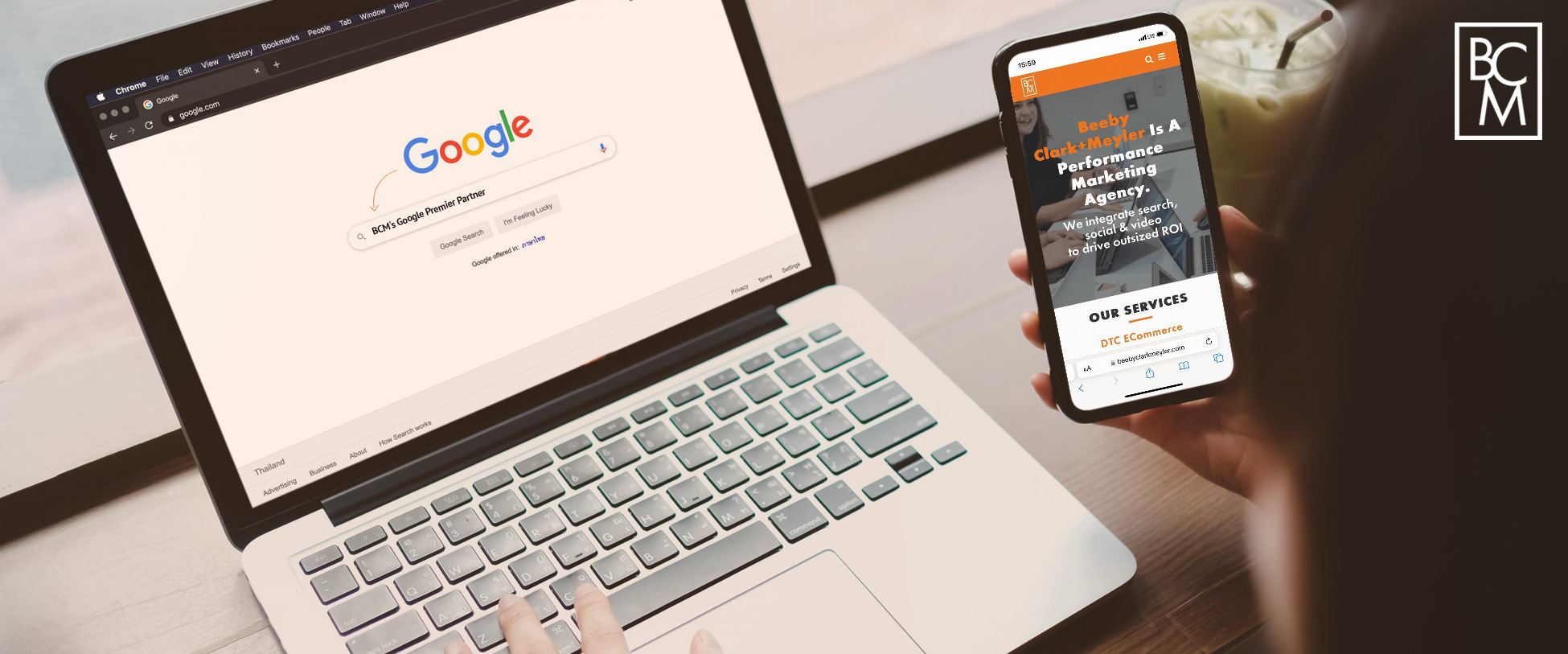Maximizing Your Ad Campaigns with a Google Premier Partner: An Insider’s Guide
How BCM’s Google Premier Partner Status Can Supercharge Your Ad Campaigns If you want to get the best ROI for your paid search ads, you need to know...

Google Smart Bidding is becoming very prevalent for all accounts and campaigns. There are several target goals that can be chosen, from maximizing clicks for programs without hard KPIs or new accounts/campaigns with little data, all the way to maximizing conversions through a target CPA or a target ROAS. These give Google very specific guidelines on what goal you would like Google to hit for your program.
With this new goal, there is less “manual” work in moving up and down your bids and the normal optimization of a daily routine. Instead, it’s important that you ensure you feed the Google machine enough data for it to make decisions.

Google needs at least 30 conversions over 30 days in order to make decisions when in Maximize Conversions target. This is so the Google machine has enough past conversion data to make future decisions on where to bid up and where to bid down to hit the goal you have set.
One of these levers to ensure that Google has enough data is audiences. Feeding Google audiences can ensure that Google knows the types of customer that can work for your program. It is still important to be leveraging your first party audiences, which can include Google Customer Match and your first-party pixel data from users who have visited and/or taken an action on your site.
Similar audiences used to be an audience type that we could leverage, but having these lookalike-type audience as separate and targetable is no longer available as of May 2023. Google states that now in Search and Shopping campaigns, similar audiences will just be something that Google leverages on its own in Smart bidding.

In addition to first party audiences, it’s important to add as many Google-owned audiences to your campaigns on Observation. This can help in your data insights to find which users are performing best. For example, for a hotel client, you may assume that the In-Market for Travel segment will perform great for your client, but you discover that users who have an affinity to be Family Focused in Google’s affinity audiences s a top performer for bookings. This may help inform you that you need to create a new ad group for “family hotels” and create a landing page around this audience to help drive more bookings.

Source: Google Ads
Overall, audiences help Google ads make better decisions and hit the goals you have set. By analyzing the data collected through audience targeting, Google Ads can identify patterns in user behavior and use this information to optimize bids in real-time for each individual auction. This helps to ensure that your ads are shown to hit your goal.
Audience targeting in Google Ads can help inform Smart Bidding by providing valuable data about your target audience, which can be used to optimize your bidding strategy for better ad performance and higher ROI.

Marketers should be asking their agencies how they can leverage their own powerful first-party data, and to provide paid search recommendations that consider different keyword types and tailored creative copy that speak to these audiences.
Google no longer allows users to manipulate the similar audiences feature, but per Google, Smart Bidding accounts for similar audiences automatically.
Make sure you utilize the Observation feature to add as many Google-owned audiences as possible to contribute to your optimization. For example, if your client owns a hotel, you could assume that the In-Market for Travel segment will work best — but you could also pay attention to the affinities of the audiences. Google Analytics could reveal a “family focused” affinity, which would make another very useful audience, segmented into a family hotels campaign.
Knowing how to maximize your Google advertising efforts with constant changes and updates can greatly contribute to your return on investment (ROI). Consider an expert agency like Beeby Clark Meyler to manage your campaigns with efficiency and excellence.

How BCM’s Google Premier Partner Status Can Supercharge Your Ad Campaigns If you want to get the best ROI for your paid search ads, you need to know...
Will Google+ overtake Facebook? Is Google+ the Facebook killer? Tech bloggers and social media analysts love to ask these types of questions for...